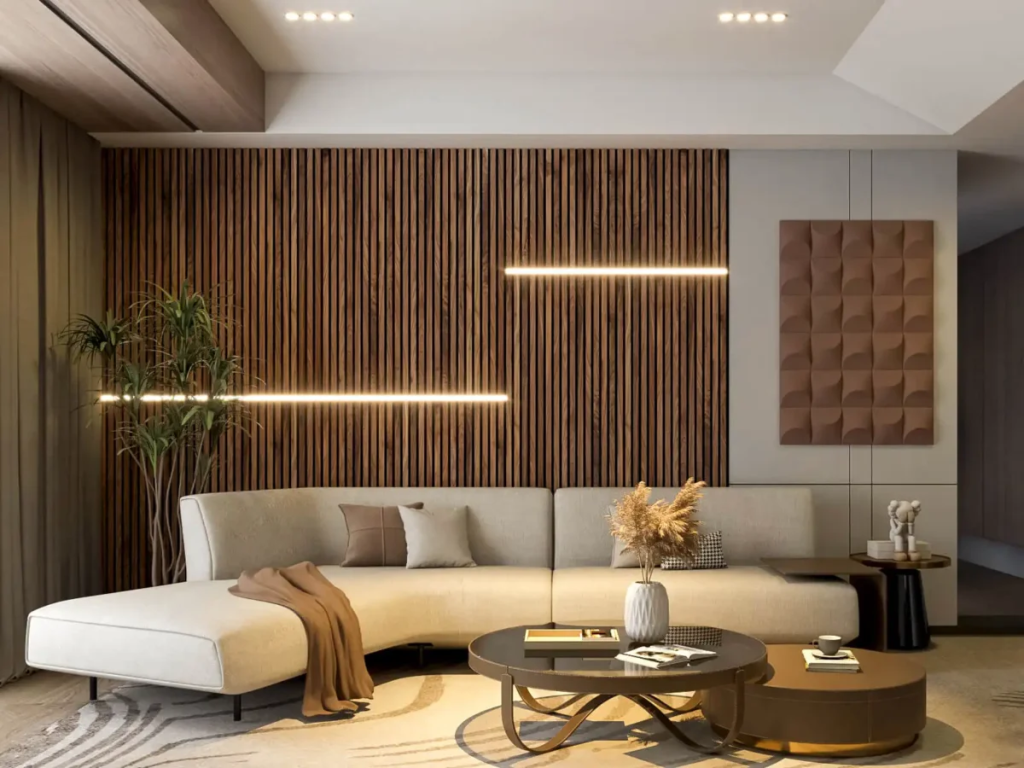In today’s fast-paced world, sound plays a vital role in shaping our experiences—whether in a home theater, recording studio, office, or public space. Poor acoustics can make communication difficult and create discomfort, while superior sound quality enhances productivity, focus, and overall well-being. One of the most effective and visually appealing solutions to improve sound quality is the use of high-quality acoustic wood panels.
Understanding the Importance of Acoustics
Acoustics is the science of sound—how it behaves, travels, and interacts with different materials and spaces. When a room has poor acoustics, sound waves bounce around excessively, leading to echoes, noise buildup, and unclear audio. This not only affects listening experiences but can also reduce concentration, increase stress, and hinder communication.
Acoustic treatment aims to solve these issues by improving the way sound behaves in a room. Using materials that absorb or diffuse sound—like acoustic panels wood—can dramatically enhance clarity, reduce reverberation, and create a balanced sound environment suitable for both work and leisure.
The Role of Acoustic Wood Panels
Acoustic wood panels are an innovative solution that combines functionality with aesthetics. These panels are designed to absorb unwanted sound reflections while maintaining a natural, elegant appearance. Made from materials like MDF, plywood, or hardwood, they bring warmth and texture to interiors while improving acoustics.
Whether used in offices, music studios, classrooms, or living rooms, wood acoustic panels create a comfortable and clear sound environment. They help reduce background noise and echoes, making conversations easier to follow and music more enjoyable. Additionally, their natural finish complements a wide range of design styles—from modern minimalism to rustic charm—making them a favorite among architects and interior designers.
How Acoustic Wood Panels Work
Acoustic wood panels work by absorbing sound waves that would otherwise bounce off walls and ceilings. The panels often feature perforations, slats, or grooves that trap sound energy, reducing reverberation and echo. Behind the wooden surface, layers of acoustic foam or felt further enhance sound absorption. This layered design ensures that sound waves are effectively managed while preserving the visual appeal of natural wood.
The result is a more balanced sound environment where speech is clearer, background noise is minimized, and audio playback feels richer and more immersive.
Benefits of Using High-Quality Acoustic Wood Panels
High-quality acoustic wood panels offer more than just sound control—they enhance clarity by reducing echoes and balancing acoustics, making speech and music clearer and more enjoyable. Their natural warmth and texture add elegance to any interior, complementing both modern and traditional spaces. These panels also create a quieter, more comfortable environment ideal for work or relaxation. Versatile and eco-friendly, they provide an effective and sustainable solution for improving sound quality and design across a variety of settings.
Types of Acoustic Wood Panels
Acoustic wood panels come in several styles, each designed for different needs:
- Perforated Panels: Feature small holes that allow sound to pass through and be absorbed by internal materials. Ideal for offices and auditoriums.
- Slatted Panels: Use vertical or horizontal wooden slats with spacing that allows sound to dissipate. Common in modern homes and studios.
- Solid Panels: Offer minimal perforation but still improve sound control while emphasizing visual appeal.
When selecting panels, consider factors like room size, desired sound absorption level, aesthetic preferences, and budget.
Before and After: The Impact on Sound Quality

Before installation, rooms often suffer from excessive reverberation and unclear sound distribution. Speech can become muddled, and audio playback may lack depth. After adding acoustic wood panels, these issues diminish noticeably. The sound becomes more balanced, dialogue more intelligible, and music playback gains richness and precision.
Whether used in a small office meeting room or a large performance space, the transformation is both audible and visible—creating a calmer, more refined environment.
Installation and Maintenance Tips
Installing acoustic wood panels is a simple process when done with proper preparation and care. Before installation, it’s important to measure the space accurately and determine the optimal layout to achieve balanced coverage. Gather all the necessary tools and mounting materials in advance, and mark alignment points on the wall to ensure precise placement. During installation, secure each panel evenly, using high-quality fasteners or adhesives suitable for the surface type, and double-check that all panels are properly aligned for a clean, professional finish.
Once installed, maintaining the panels is essential for preserving both their appearance and performance. Regularly dust them with a soft cloth and avoid using harsh cleaning products that may damage the finish. To prevent warping or discoloration, keep panels away from excessive moisture and direct sunlight. With simple, consistent care, acoustic wood panels will continue to perform effectively and enhance the beauty of your space for many years.
Real-World Impact: Transforming Spaces
In many modern design projects, acoustic wood panels have proven transformative. For example, open-plan offices that once struggled with noise distractions have achieved remarkable improvements in clarity and comfort after installation. Similarly, recording studios have benefited from more accurate sound monitoring and cleaner recordings. Beyond functionality, the panels contribute to a sense of warmth and sophistication that enhances the overall ambiance of the space.
Conclusion: The Power of Good Acoustics
Sound quality has a profound impact on how we experience our surroundings. Whether you are working, learning, or relaxing, good acoustics can dramatically improve focus, communication, and comfort. High-quality acoustic wood panels offer a perfect balance of performance, sustainability, and design.
By reducing unwanted noise and enriching sound clarity, they not only elevate the listening experience but also enhance the beauty and functionality of any environment. Investing in proper acoustic treatment is not just about better sound—it’s about creating spaces that feel harmonious, productive, and inspiring.







